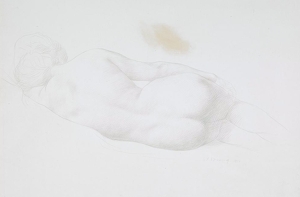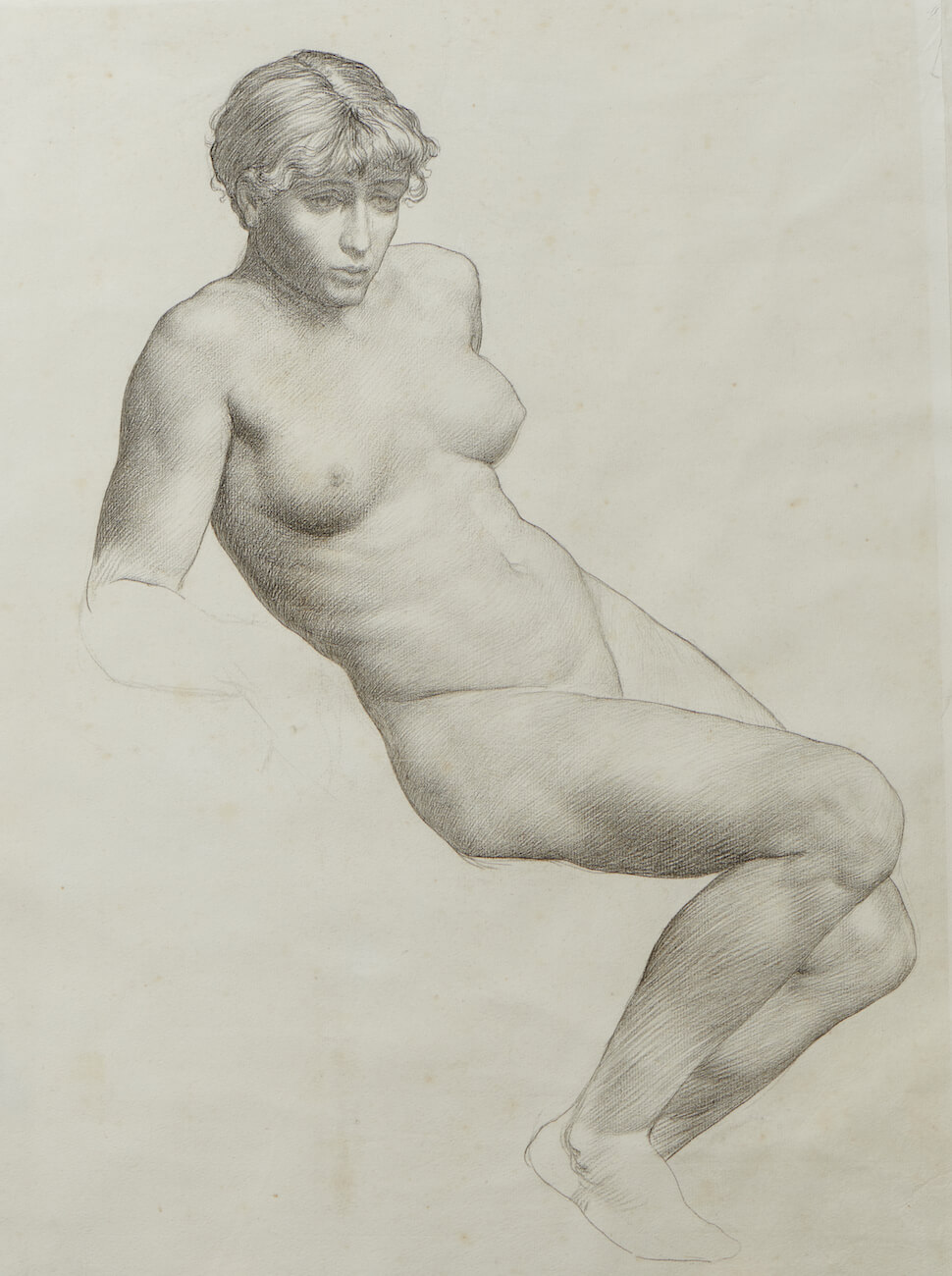William Strang (1859 - 1921)
£9,750
Silverpoint on paper
Size:
Height – 55cm
Width – 41cm
1 in stock
Literature: Llewellyn, Sacha, and Paul Liss. Portrait of an Artist. Liss Llewellyn, 2021, p.98.
William Strang was trained in the use of this highly disciplined drawing medium during his time at the Slade School of Art (1875-1883). The Professor there during this time was Alphonse Legros (1837-1911), who was one of the chief exponents in the resurgence of metalpoint during the second half of the nineteenth-century. Strang would become the assistant master in Legros’ etching class.
An artist working in metalpoint uses a sharp, pointed instrument (a stylus) with a metal tip to draw on paper, parchment, or wood that has been specially coated. As the stylus travels across this slightly abrasive ground, a small amount of metal is scraped off and remains behind, creating a line.
Metalpoint is considered a challenging medium. The lines can be difficult or even impossible to erase depending on such factors as the type of ground. Unlike pen or chalk, which can produce strokes of varying thickness or darkness depending on how hard artists bear down on the instrument, silver leaves a nearly uniform line. Nonetheless, the medium offers practical and aesthetic advantages: Its portability and convenience make it particularly suited for use in sketchbooks, as artists do not have to carry an inkwell or wait for ink to dry. Silverpoint is especially resistant to smearing and therefore has the added benefit of durability. Also, the precision and subtlety of its delicate lines render it ideal for capturing fine detail. Above all, it is the shimmering beauty of metalpoint that has attracted artists across the centuries.
The medium was perfectly suited to the subtlety and technical quality of Strang’s draughtsmanship. Another silverpoint by Strang depicting a reclining female nude, viewed from behind, can be seen in the collection of the Scottish National Gallery of Art.


Born Dumbarton, 13 Feb 1859; died Bournemouth, 12 April 1921. Scottish painter and printmaker. Following a brief apprenticeship with a shipbuilding firm in Clydesdale, he entered the Slade School of Art (1876) where he adhered to the uncompromising realism advocated by his teacher Alphonse Legros. After completing his studies at the Slade (1880), Strang became Legros’s assistant in the printmaking class for a year. For the next 20 years he worked primarily as an etcher. His etchings include landscapes in the tradition of Rembrandt, pastoral themes indebted to Giorgione and macabre genre subjects, marked by a sense of tension and suspended animation. He also etched 150 portraits of leading artistic and literary figures. The commitment to realism and psychological intensity that characterizes the best of Strang’s etched work is also evident in the paintings that dominated the latter half of his career. The influence of the Belgian and French Symbolists’ work and Strang’s growing confidence in the handling of colour combined in his mature style with a linear clarity and schematic colouring that is best seen in such works as Bank Holiday (1912; London, Tate). His oil portraits, for example Vita Sackville-West as Lady In a Red Hat (1918; Glasgow, A.G. & Mus.), are strikingly potent images of their time. An important collection of Strang’s graphic work is in the Art Gallery and Museum in Glasgow. His sons Ian Strang (1886’1952) and David Strang (born 1887) were also printmakers.